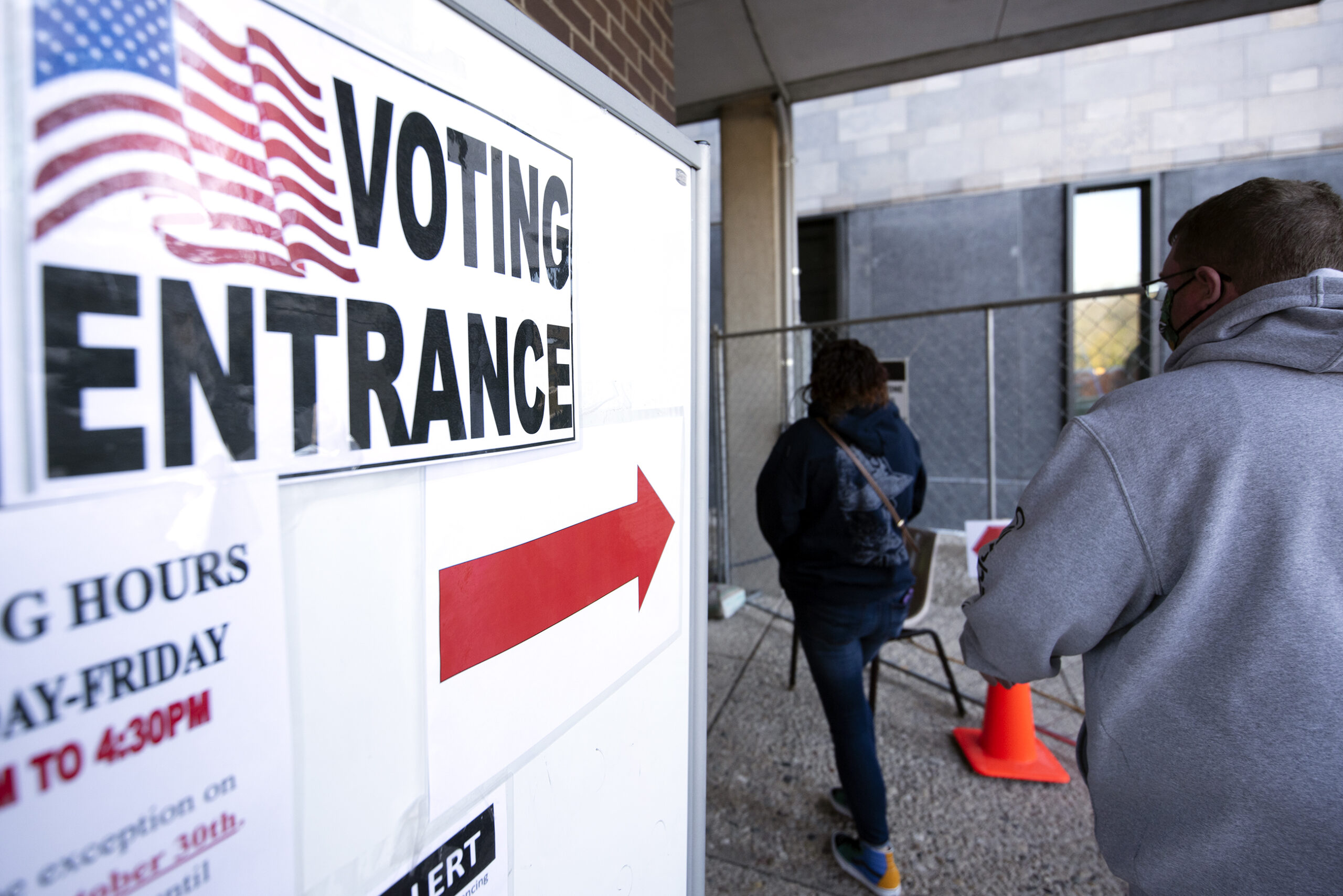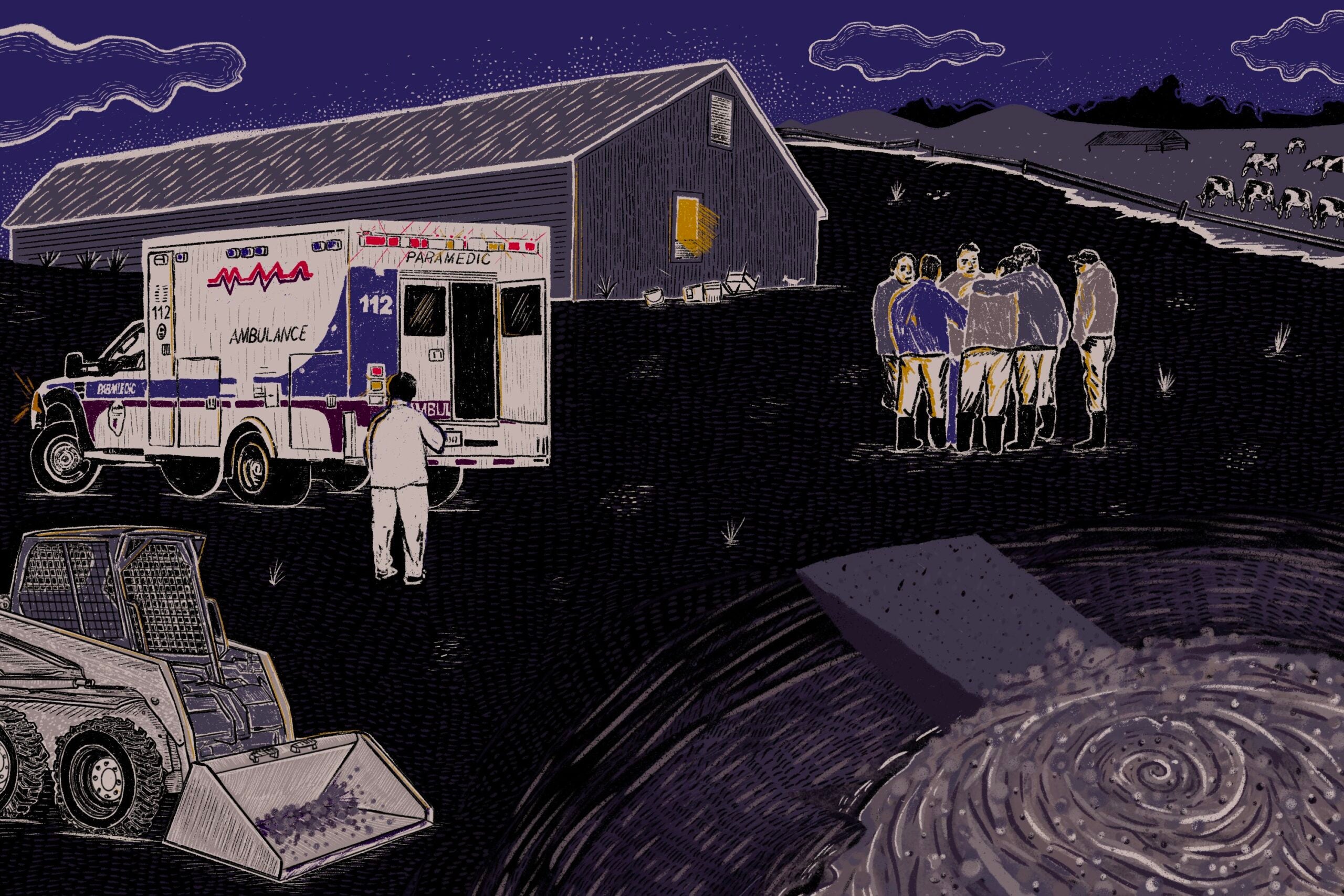There are plenty of reasons to feel that life in the workplace has become completely dominated by meetings.
Work has gotten more complicated than ever, with more people needing to collaborate to get things done. We want to keep our colleagues in the loop. And even with all the digital tools in the world to keep us in sync, there’s no true substitute for a face-to-face conversation.
But that doesn’t mean we particularly enjoy our meetings — or that we’re actually being productive when we have them. A 2019 survey claimed respondents feel two-thirds of all of the meetings they attend are pointless. That same study estimated that billions of dollars are lost to unproductive meetings each year.
Stay informed on the latest news
Sign up for WPR’s email newsletter.
Mamie Stewart thinks that’s a shame, especially because meetings can actually be awesome.
“When they’re done really well they can actually be the best part of your day,” she said, speaking to Anne Strainchamps for “To the Best of Our Knowledge.”
But frequently, we’re not doing it well — and it might not be our fault.
While in most offices, it’s a basic job requirement to know how to conduct daily meetings, it’s not like we’re innately gifted at making them productive. And it’s not like anyone is teaching us.
“Nowhere in life are we taught how to gather people,” said Stewart, author of “Momentum: Creating Effective, Engaging and Enjoyable Meetings.” “Even in business school. It should be a course: how to have meetings. How to use meetings to get work done.”
So if you feel like the meetings at your workplace could be more productive — or if you’re the one burdening a whole team with pointless meetings — Stewart has a few tips for how to make those meetings better for everyone.
This conversation has been slightly edited for brevity and clarity.
Tip No. 1: Speak Up When Meetings Are Bad
Mamie Stewart: There are some nice, easier ways to speak up.
Rather than saying, “I think this meeting is not working. We should wrap it up.” If a meeting is not working (and) you feel comfortable to speak up, say, “Hey, I just want to check in on why we’re gathered. What it is we’re trying to accomplish in this time.” And you say, “What is it we’re trying to accomplish? I want to make sure that I’m clear about what we’re trying to accomplish today. Can someone articulate that for me?”
So there are ways you can interrupt like that. But if you’re not comfortable even with that, talking to the meeting leader afterwards and saying, “Hey, I’m curious how you thought that meeting went?” and open up a conversation with them and find out: were they satisfied? Did they get whatever outcome they wanted? And then you can share your position — hopefully they’ll ask you — and even if they don’t, you can say, “You know what I was thinking — here are some things that, you know, I think we could do better to make our next time we gather even more effective.”
Tip No. 2: Really Ask Yourself If A Meeting Is The Best Next Step
MS: We often jump to meetings as the next step when we have other options that would be more effective.
So I’m facing a problem. OK, let me figure out what I need.
Am I clear about the problem?
Do I need other people to help me solve it?
Do I need them together all at the same time, or can I share something with a bunch of people individually and just get their input?
Do you need to have a meeting, or can you send something by email?
Do you need to take some other step on your own before you gather the people together?
Tip No. 3: Do Your Homework. Why Are You meeting? What Is Your Desired Outcome?
MS: There’s the before, during and after of every meeting. And the before has a whole bunch of preparation that you need to do as the meeting leader and that the participants can do. If everybody is owning the success of the meeting, everybody needs to walk in prepared, not just the meeting leader.
Start with why we’re having this meeting, and then translating that why into what result we want to accomplish. What is the desired outcome?
It’s very easy for people to answer the question, “Why?”
To review last quarter’s performance.
To discuss the results of X, Y, Z experiments.
To check in on the product status.
But at the end of the meeting, how will you know (the meeting was) successful? What will we achieve after having reviewed the results, or checked in on something, or whatever that activity is that we are trying to do? And that’s what we called the desired outcome. It’s the noun — so it could be things like a list of ideas to explore further.
Tip No. 4: Meetings Should Be Aligned With Goals, Culture Of Your Workplace
MS: One that comes up a lot: creativity, experimentation, risk-taking and being entrepreneurial.
Organizations or teams will say, “We’re creative, we love creativity and innovation and thinking big.” And then again you watch them in a meeting and you see them shoot down every idea that comes out.
You say you’re a culture of creativity, but that’s not what’s happening in your meetings. What you’re doing is you’re narrowing in and you’re not making space for the ideas that are creative, that are risk-taking. You’re focusing too much on the safety and the status quo.
Tip No. 5: Have A Clear And Well-Planned End To The Meeting
MS: At the end of the meeting, you can do two things.
One, you can check in against your desired outcome and say, “How did we do? Did we accomplish this?”
And if yes, celebrate. It was a productive conversation, you got what you wanted to get out of it.
And if you didn’t, you can reflect on what happened. Where did we get stuck along the way? Did we miss some information that should’ve been shared ahead of time so we were prepared to make this decision? Did we not facilitate ourselves well, so we ran out of time? What happened along the way that stopped us from getting to that desired outcome?
The second thing you can do is you can be really clear about what to do with all those ideas. If you’re having a brainstorming meeting and people are throwing out ideas, what is going to happen with those?
(Let’s say) we’re gonna write them all down and stick them into a Dropbox folder and that’s fine, we’ll revisit them maybe at some point the future. That’s OK if there’s a reason for that, if you’re at some point going to have another meeting where are you going to pull those back out and pick the five top ideas that we want to move forward with. Otherwise, think about whether or not that’s a good use of your time, to be brainstorming all of these ideas and filing them away. That might not be the desired outcome of a meeting anymore. Maybe you want to shift those conversations toward a more productive or effective or necessary desired outcome.
Tip No. 6: Give People Closure
MS: Ending your meeting is just as important as how you start it.
Because when people dissipate out of a meeting — you’re running right up to the deadline of time, and people are like, “Oh, I have another meeting to go to” and they run out the door — that is very unsatisfying. It does not feel like the conversation was productive, even if it was a great conversation.
Using the last five minutes and reserving them for a wrap up can really change the quality of the meeting experience and help you articulate the outcomes of that meeting.
The easiest way to start doing a wrap up is to just ask the group: what did we decide in this meeting? What are our decisions that we made? What are the next steps and who’s gonna do what? Who’s gonna do what by when? Even better. And is there any other information that we need to share with people from this discussion today?
Type that up real time as people are going around in the circle, sharing whatever their decisions tasks and next steps and big ideas were. And then hit send on the email. All right then and there.
It gives people that sense of closure — we know exactly what we decided. And you’ll realize really quickly if you didn’t have decision clarity because people are still not sure what the decision was.






